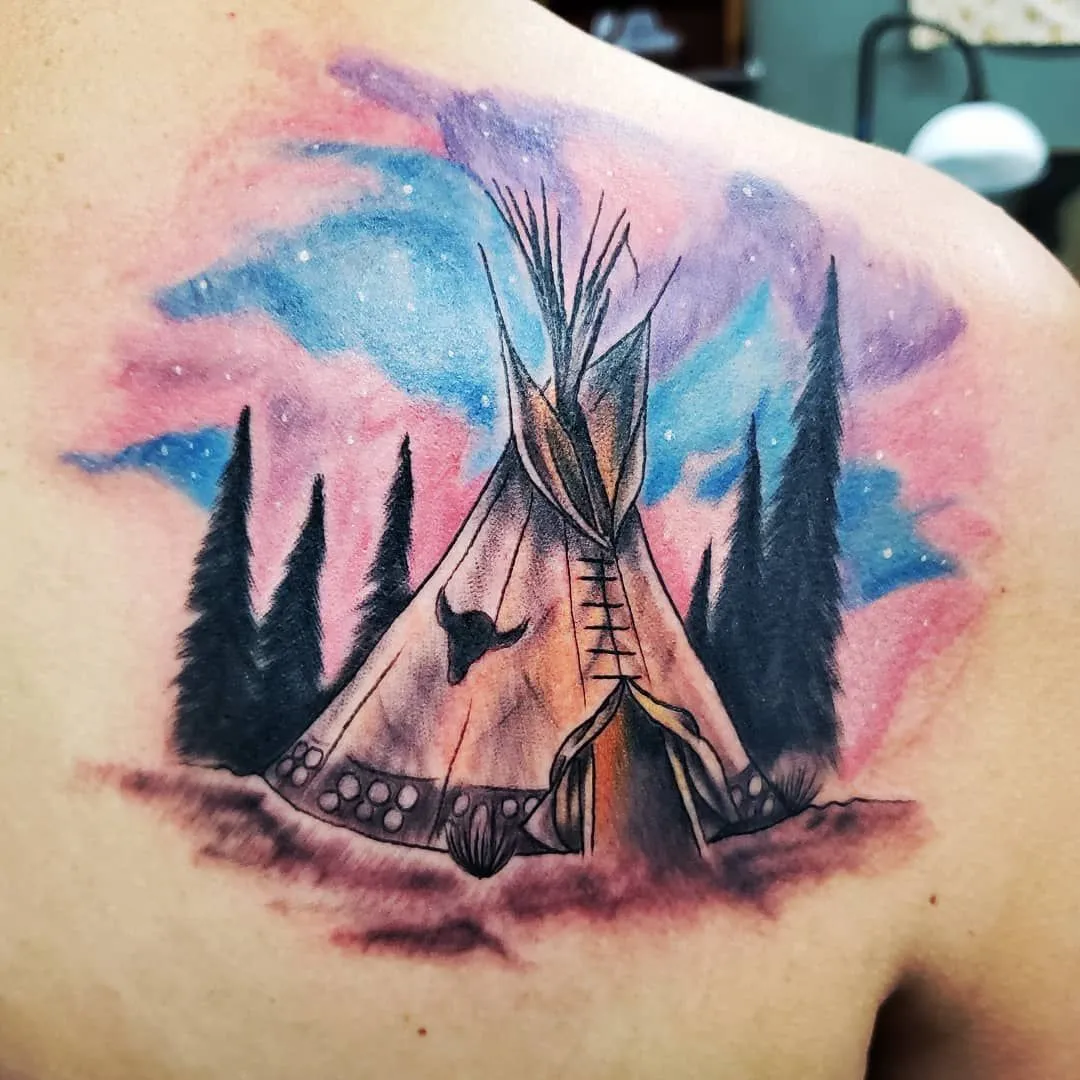What is the difference between tipi and teepee?
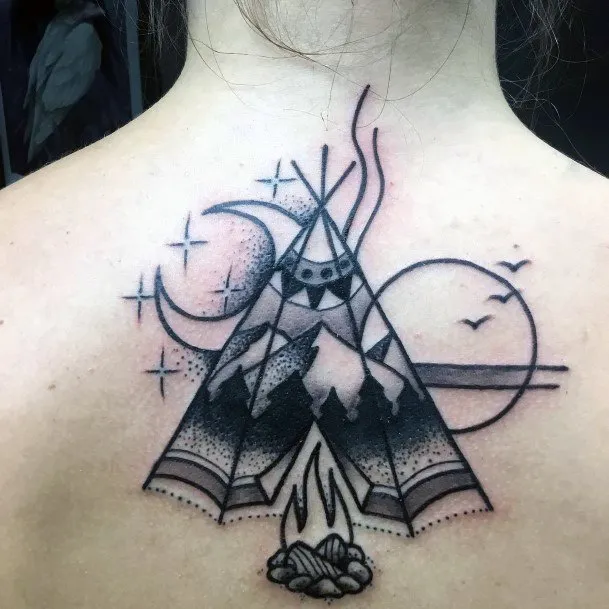
Tipi tents, with their iconic conical shape and rich historical roots, continue to captivate the modern world. These ingeniously designed shelters, supported by sturdy poles, boast an age-old tradition of withstanding the harshest of elements.
In this exploration, dive into the world of tipi tents, unraveling their enduring appeal and versatile applications. From rugged outdoor expeditions to trendy glamping experiences and even imaginative play spaces for children, tipi tents have carved a niche in our lives. Join us as we journey through the past, present, and future of these remarkable structures.
The Timeless Appeal of Tipi Tents
From Ancient Origins to Modern Utilization
Tipi tents are far more than just outdoor shelters; they are living relics of ancient design. The conical shape, steep incline, and intelligent construction of tipis are not only aesthetically pleasing but also highly functional.
The intriguing history of tipi designs spans the globe, reflecting the ingenuity of indigenous cultures across time. This timeless appeal has earned tipis a special place in the world of camping, from facing extreme weather to indulging in the luxury of glamping.
Tipi Tents: A Modern Favorite for Outdoor Enthusiasts
Combining Tradition with Innovation
In the realm of camping, where durability, portability, and comfort are paramount, tipi tents have emerged as a favored choice. The design’s natural ability to shed wind, snow, and rain showcases its remarkable resilience in challenging environments. Whether you’re embarking on a rugged expedition or simply seeking a unique camping experience, modern tipi tents provide a harmonious blend of tradition and innovation.
Glamping in Style: The Rise of Tipi Tents
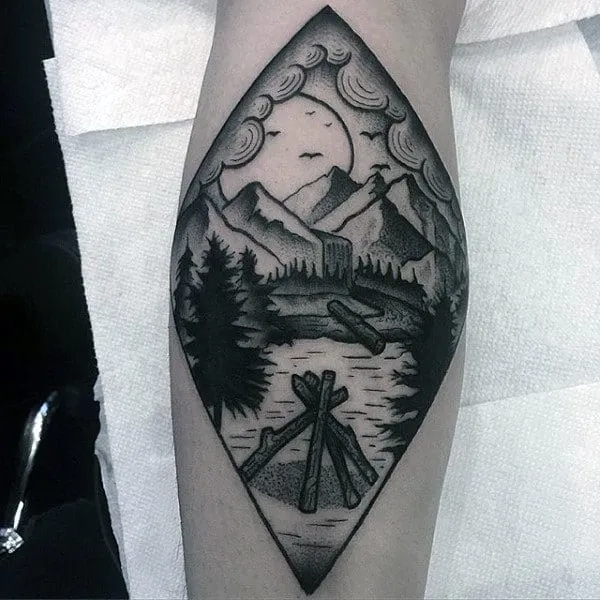
Luxury Meets Nature
The glamour of camping, or “glamping,” has taken the outdoor world by storm. It’s a delightful fusion of the natural world with modern comfort, and tipi tents are at the forefront of this movement. Their unique aesthetic appeal, ease of setup, and spacious interiors have made them a glamping favorite. Experience the enchantment of the great outdoors without compromising on luxury or style.
Tipi Tents for Kids: Where Imagination Takes Root
Backyards and Beyond
The enchantment of tipi tents extends beyond the world of adults. In trendy households, tipi tents are popping up as play areas for children. These imaginative spaces not only encourage creative play but also introduce kids to the wonders of the outdoors. Whether it’s in the backyard or indoors, tipi tents for kids are a growing trend that bridges the gap between playtime and adventure.
Tipi tents have proven their worth through centuries of use. From their origins in indigenous cultures to their current status as a symbol of both adventure and luxury, tipi tents continue to capture the imagination. The timeless elegance, adaptability, and visual appeal of these tents ensure they’ll remain an integral part of our world for years to come.
Why are teepees cone shaped?
Demystifying the Linguistic Journey from Thípi to Tipi
The world of portable, conical shelters bears a nomenclature as diverse as the cultures that have cherished them. Are they tipis, tepees, or teepees? As the debate over spelling continues, this article aims to shed light on the linguistic journey that has brought us these varied names for a singular, iconic structure.
Thípi to Tipi: A Native American Legacy
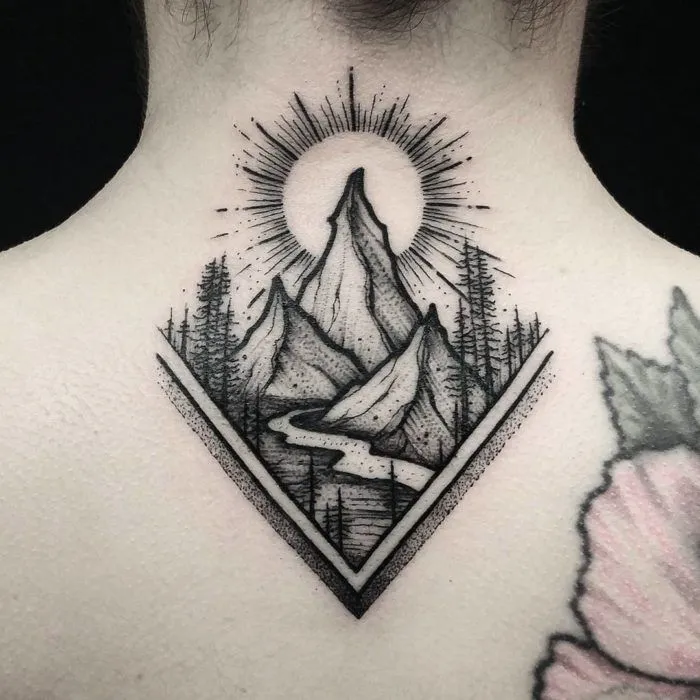
The Lakota Origins
The word “tipi” finds its roots in the Lakota, a Native American tribe hailing from the regions now known as Iowa and the Dakotas. The Lakota word “thípi,” meaning dwelling, served as the source of inspiration for the English term “tipi.” A tipi is, at its core, a conical and easily transportable structure featuring two adjustable smoke flaps. Thus, the technically accurate spelling for our beloved shelters is “tipi.”
The Pronunciation Predicament
Where Teepee Meets Tipi
The linguistic intricacies of the English language are as vast as the cultures it encompasses. This complexity has led to two alternate spellings: “tepee” and “teepee.” The pronunciation of “tipi” as “TEE-PEE” has given rise to these variations. While all three spellings refer to the same structure, personal preference often guides the choice of spelling.
Kåta: A Scandinavian Departure
The Influence of the Sami People
Amidst the fervor of linguistic exploration, the term “Kåta” steps onto the stage. The original event tepees trace their origins to Scandinavia, specifically the Sami People of Northern Europe. These unique structures, while distinct from Native American tipis, share striking similarities. They feature wooden poles forming a conical shape, covered with canvas – a design that closely mirrors the iconic tipis from North America.
In conclusion, the linguistic tapestry of tipis, tepees, and teepees is a testament to the cultural diversity that has woven these shelters into the fabric of human history. While the spelling may vary, their essence as conical, portable structures remains unchanged.
Whether you opt for “tipi,” “tepee,” or “teepee,” what truly matters is the enduring legacy of these timeless dwellings that have transcended borders, language barriers, and centuries.
Can I get a Native American tattoo?
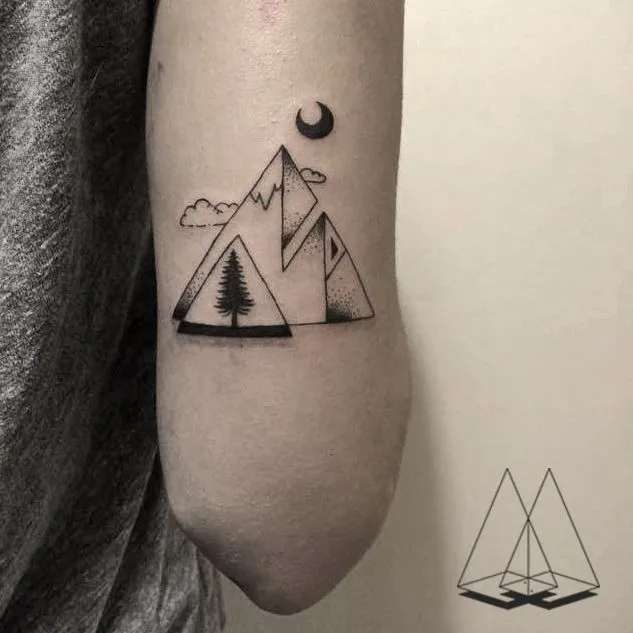
The world of tattoos is a canvas painted with diverse cultures, stories, and meanings. Among these, Native American tattoos stand as a testament to a rich and vibrant history. The debate over whether non-native individuals should embrace these designs rages on, and while there may be no definitive answer, it is crucial to understand the deep cultural significance and potential consequences tied to these symbols.
Embracing a Complex Heritage
Honoring the Past
Native American tattoos are not mere inked patterns; they are a reflection of an intricate tapestry of indigenous traditions, values, and beliefs. The indigenous peoples of North America have utilized tattoos as a means of expression for centuries. These tattoos hold the power to narrate tales of bravery, heritage, and spirituality.
Understanding the Traditional Designs
Deciphering the Symbols
Before deciding to adorn yourself with a Native American tattoo, it is essential to delve into the meanings behind these designs. Each symbol and motif carries a story, and comprehending these narratives can deepen your appreciation for this art form. Learning about the significance of animals, feathers, arrows, and geometric patterns in Native American culture is an excellent starting point.
The Potential Impact on the Native American Community
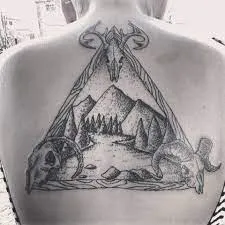
Acknowledging the Consequences
While your choice of tattoo is a personal one, it carries the weight of cultural appropriation and potential insensitivity. Native American communities have faced numerous challenges throughout history, including the misuse and distortion of their cultural symbols. By opting for a Native American tattoo, you are participating in this ongoing dialogue, and it is essential to do so with respect and awareness.
Navigating the Debate
The Appropriation Question
The appropriateness of non-natives donning Native American tattoos remains a subject of debate. Some believe that these designs can serve as a bridge to understanding and respecting indigenous cultures. Others argue that such tattoos can perpetuate harmful stereotypes and trivialize the struggles faced by Native American communities.
Cultural Respect and Awareness
Choosing Wisely
In the end, the decision to get a Native American tattoo should be rooted in cultural respect and informed awareness. Take the time to research and understand the symbols and their meanings. Engage in a respectful dialogue with the Native American community, if possible, and gain insight into their perspectives.
This will help ensure that your choice of tattoo is one that respects the past, acknowledges the present, and fosters a better future.
In the ever-evolving conversation surrounding Native American tattoos, one truth remains constant – these designs are not just ink on skin; they are living fragments of history, identity, and culture. It is our responsibility to carry them forward with reverence and understanding.
How To Native American Teepee Tattoo Designs?
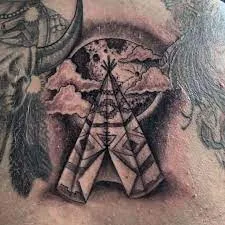
The vast landscapes of the Midwest, Canadian Prairies, and American Plains have been home to nomadic peoples whose way of life was deeply intertwined with the land. At the heart of their existence stood the teepee, an iconic structure that provided shelter, warmth, and a sense of home in the midst of untamed territories.
The Teepee: A Nomadic Marvel
The Perfect Nomadic Dwelling
The teepee, often spelled as tipi, was more than just a home; it was a sanctuary in the heart of the wilderness. Its design was both ingenious and practical. In the winter, it provided warmth, and in the summer, it offered shade from the scorching sun. Its framework, supported by long lodgepole pine poles, stood strong against the howling winds of the plains. These structures were engineered to stay dry even in the rain, a testament to the resourcefulness of the indigenous people.
The Ingenious Construction
Tales of Lodgepole Pine
A key element in the construction of the teepee was the use of lodgepole pine, a tree whose name is a nod to its role in shaping these nomadic homes. The teepee’s frame consisted of long lodgepole pine poles that extended to create the iconic conical shape. The outer covering of these structures was crafted from buffalo hides, expertly sewn together to ensure the teepee’s resilience against the elements.
A Legacy Remembered
Tragedy and Survival
The history of the indigenous peoples of the Americas is marked by both tragedy and resilience. The arrival of European settlers brought about immense suffering, largely due to the introduction of new diseases. However, the legacy of the first inhabitants of this continent endures to this day. The teepee stands as a symbol of the enduring spirit and traditions of the Plains tribes.
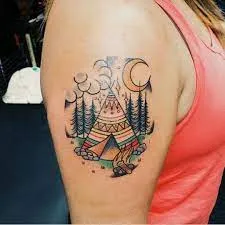
Ink That Tells a Story
Commemorating Heritage
A teepee tattoo is not just a design; it’s a profound connection to a rich heritage. It serves as a reminder of the nomadic way of life, the close relationship with nature, and the indomitable spirit of the indigenous peoples of the Midwest and Plains. This ink tells a story of strength, adaptability, and the ability to thrive in even the harshest of environments.
Embracing the Teepee Tattoo
Carry the Legacy Forward
In choosing a teepee tattoo, you pay homage to the legacy of Plains tribes and the enduring traditions that have shaped your heritage. It’s a mark of respect for the nomadic way of life and the strength it embodies. The teepee, with its rich history, stands as a timeless symbol of indigenous cultures and the remarkable spirit that has persevered despite adversities.
In this ink, you not only honor your roots but also acknowledge the stories of survival, resilience, and the enduring legacy of the first inhabitants of this vast land.

